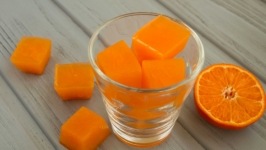The Overlooked Orange: How One Man’s Trash May Be Another’s Produce
You may have heard of them, you’ve probably seen them, and it’s quite possible you may even have a large tree full of them growing in your yard. The question remains: What are you going to do with them?
I am referring to the elusive Seville orange, also termed “sour” or “bitter” orange, names that demonstrate the widespread negative connotations associated with the fruit. The Seville orange tree looks similar to its sweeter counterpart, but its fruit have slightly thicker, dimpled skin and a stronger, floral aroma.
What turns most of us off from the Seville is the initial upset we experience when we peel and enthusiastically bite into what we assume to be the common sweet orange, but instead receive a much tarter and bitter taste than anticipated. Most of us then dismiss the fruit as inedible, and dub the tree that produces it “ornamental.” The problem with this logic is that, although we would not want to eat a large bite of Seville orange flesh fresh from the tree, the tart and bitter qualities are welcome additions to a variety of recipes.
The Seville has much higher pectin levels than the average sweet orange. Pectin is a jelling agent found in produce; consequently, Sevilles are praised as the best and most frequently used variety of orange employed when making marmalade. This higher pectin level allows Seville orange marmalade to set better and have a higher yield than marmalade made from common oranges.
Additionally, apart from culinary usages, the essential oil of bitter oranges is used in perfumes and as an appetite suppressant in herbal medicine. When the stimulant ephedra that was previously used in many weight loss products was banned in 2006, it was replaced by bitter orange extract due to its similar properties.
The sour orange is native to Southeast Asia and was carried west by the Arabs in the Ninth century. Although common in ancient Chinese medicine for centuries, the fruit wasn’t popularized for culinary usage until the end of the 12th century, when it was cultivated around Seville, Spain—hence the name. Spaniards later introduced this variety to the Americas and it was eventually embraced by the settlers and natives of Florida during the mid 18th century. Sour orange varieties now grow in many Mediterranean and tropical regions, where they thrive on sunlight and perish in times of harsh frosts.
The Arizona State University Tempe campus is abundant with a large variety of citrus trees and particularly rich in Seville orange trees. For many years, a majority of the hundreds of pounds of Seville oranges produced on campus each season were either donated to a local animal refuge or simply thrown away, at the university’s expense. The ASU Grounds Services Department did what they could to prevent as many oranges as possible from being wasted, but at the end of the day many oranges had to be thrown out before they started to decompose.
Fortunately, last spring the Grounds Services Department partnered with Sun Devil Dining to begin using edible products grown on campus in the dining halls. The proper food safety and health protocols were observed and now student groups and other volunteers participate in the Campus Harvest program by picking Seville oranges as well as other citrus varieties and herbs that are in turn used in the dining halls on campus. Volunteers are also allowed to take home a portion of their harvest for personal use.
One of the obstacles to setting up the Campus Harvest program has been debunking the myth of the “ornamental” orange. Some students will go so far as to assume that the fruit not only is inedible but is actually harmful to one’s health. (My personal favorite: One student thought that Seville oranges would cause typhoid upon consumption.) These theories are immediately discredited once students consume one of the Seville orange products produced on campus, such as the popular “Devilade” (lemonade made with Seville oranges). The campus chefs were at first hesitant to try an unusual ingredient, but once they began cooking with the Seville oranges they became very enthusiastic and are already asking about this seasons’ harvest as well as the dates for this year’s Seville orange vinaigrette competition.
In your home kitchen, cooking with Seville oranges is simple. One way to look at it is to think of the fruit as a more orangey lemon, which you would not necessarily want to take a fresh bite out of but which may be used in smaller amounts and/or after some sort of processing. I have found that any recipe calling for almost any variety of citrus may be adapted to use Seville oranges instead. The oranges impart a slightly floral and pleasantly bitter flavor that will be much appreciated, especially by more refined palates. Think Seville orange meringue pie, Seville and black pepper roasted chicken, Seville margaritas…
So I encourage you to remain open-minded about this unique citrus variety as well as other potentially edible products you find in your backyard. Who knows, maybe that orange you planned to toss out will be an essential ingredient in your next big culinary success.
If you are interested in volunteering with the Campus Harvest program, please visit the ASU Arboretum Volunteer site at uabf.asu.edu/arboretum_volunteer.
Kristen Rasmussen is a graduate student, food activist and urban forager currently working as the nutritionist for ASU Dining Services. Originally from the Northern California coastline, she now enjoys exploring Arizona’s local food scene and experimenting with locally harvested goods. kristenrasmussen.com











